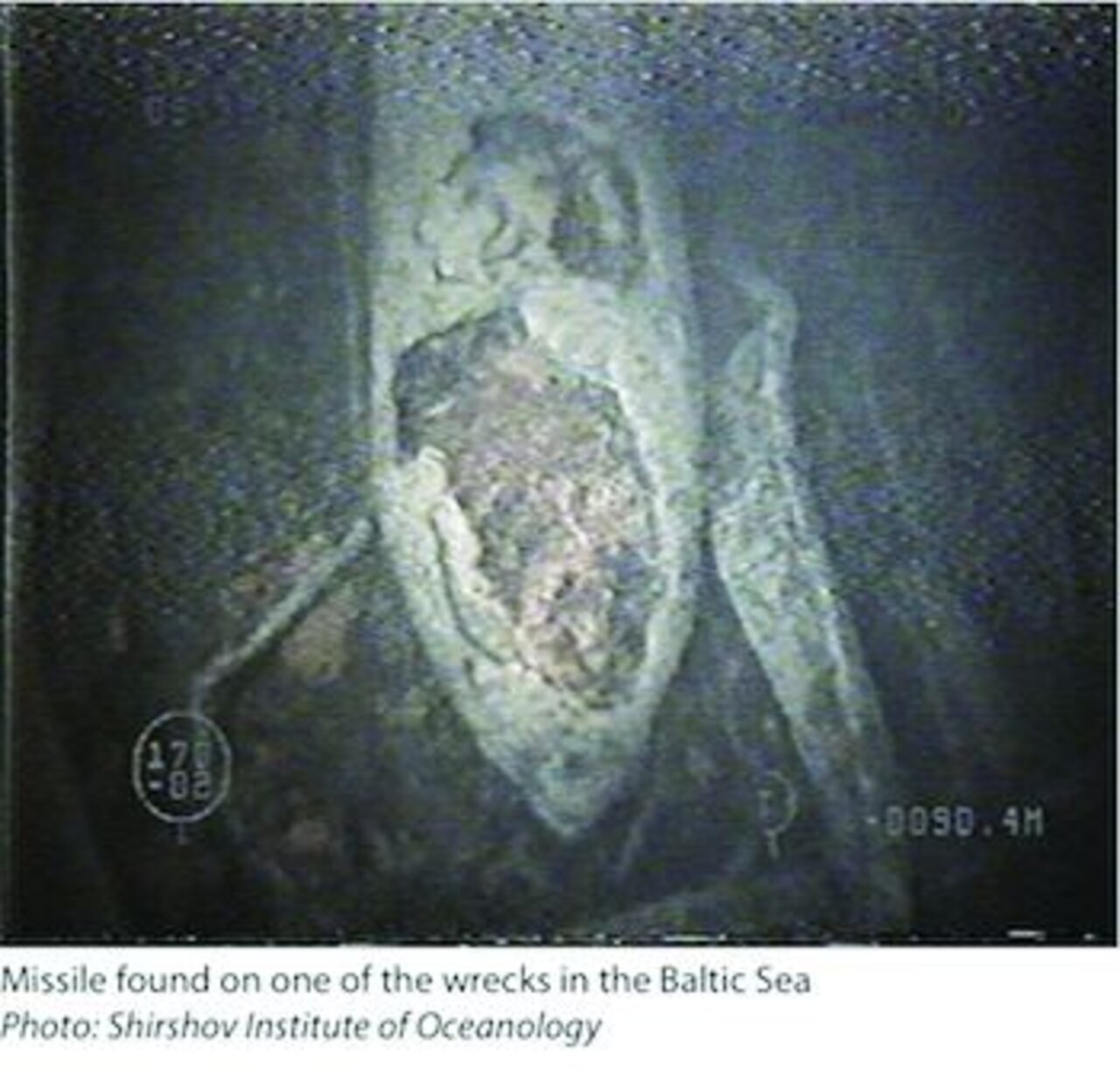Project
CHEMSEA project: Chemical munitions in the sea

CHEMSEA Project: Dumped chemical munitions and ecological effects in the Baltic Sea
Do munitions from World War 2 pose a threat to the ecosystem of the Baltic Sea? In order to answer this question, we study the health status of cod in dumpsites for chemical warfare agents in the framework of the EU-funded CHEMSEA project.
Background and Objective
Tens of thousands of tons of chemical munitions and chmical warfare agents were dumped in the Baltic Sea shortly before and in the years after the end of World War 2. These remnants of war partly constitute toxic substances that, even today, can be a threat to the Baltic Sea ecosystem. In the framework of the EU-funded CHEMSEA project, the Thünen Institute of Fisheries Ecology FI, together with project partners, carried out studies on effects of dumped chemical warfare agents on the health status of fish in the Baltic Sea.
Approach
During five seagoing cruises onboard RV Walther Herwig III in the years 2011-2013, scientist studied cod (Gadus morhua) for the occurrence a range of health and fitness parameters. This was done in the main dumpsite in the Bornholm and Gotland Basisn as well as in areas suspected to be dumpsites and in non-impacted reference areas. Our studies focused on externally visible diseases, parasites, pathological liver alterations and fitness indices. The Thünen Institute of Fisheries ecology was in charge of the studies.
Our Research Questions
Does cod from dumpsites for chemical warfare agents display a worse healthy status and lower fitness compared to fish from unimpacted reference areas?
Can possible changes in health status and fitness of cod from dumpsites be explained by exposure to chemical warfare agents?
Results
Cod from the major dumpsite for chemical munitions and chemical warfare agents east of the Island of Bornholm showed a worse health status and decreased fitness values compared to fish from unimpacted reference areas in the western and eastern Baltic Sea. However, cod from other known and suspected dumpsites were not different from fish sampled in the reference areas.
Links and Downloads
www.chemsea.eu
Involved external Thünen-Partners
- Alfred Wegener Institut (AWI) - Helmholtz -Zentrum für Polar und Meeresforschung
(Bremerhaven, List (Sylt), Deutschland)
Funding Body
-
European Union (EU)
(international, öffentlich)
Duration
6.2011 - 3.2014
More Information
Project funding number: Baltic Sea Region Programme 2007-2013, Projekt 069
Project status:
finished
Publications
- 0
Barsiene J, Butrimaviciene L, Grygiel W, Lang T, Michailovas A, Jackunas T (2014) Environmental genotoxicity and cytotoxicity in flounder (Platichthys flesus), herring (Clupea harengus) and Atlantic cod (Gadus morhua) from chemical munitions dumping zones in the southern Baltic Sea. Mar Environ Res 96:56-67, DOI:10.1016/j.marenvres.2013.08.012

![[Translate to English:] [Translate to English:]](/media/_processed_/2/9/csm_Embryo-Exp_Gelege_9F_dpf5-200513111619_c8534a8199.jpg)
![[Translate to English:] [Translate to English:]](/media/_processed_/2/9/csm_Embryo-Exp_Gelege_9F_dpf5-200513111619_9027994d44.jpg)





